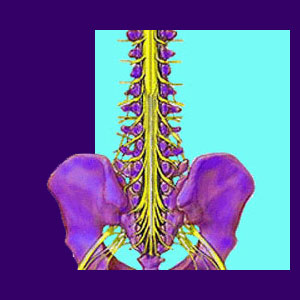
An incomplete spinal cord injury is defined as damage to the spinal cord where some neurological activity is still occurring below the affected traumatized vertebral level. Commonly, victims will endure some degree of sensory deprivation and/or partial paralysis. Basically, condition is characterized by a variable reduction in the ability to move and feel bodily regions below the level of the cord damage. Each case is highly specific, so the symptoms can range from almost inconsequential to virtually total loss of functionality and everywhere in between.
Patients suffering from partial paralysis have a much better prognosis for both future functionality and regeneration of nerve signal than individuals who endure a complete spinal cord injury.
This dialog describes incomplete or partial spinal cord injury, including the circumstance of onset, the usual causes and the anatomical consequences created.
Incomplete Spinal Cord Injury Facts
Partial cord injury patients have limited neurological signals traveling from their brains to the affected areas of their bodies. The higher the level of spinal cord injury, the more anatomical areas will be partially paralyzed or suffer reduced sensory capabilities.
Typically, incomplete injuries to the spinal cord in the thoracic, lumbar or sacral regions will result in the reduction of nerve function in the legs and lower torso. This can lead to a mild reduction in the ability to walk or might entail a partial paraplegic condition.
Incomplete cervical injuries are more severe and will reduce the nerve signal in all four limbs and at least some sections of the torso. This might bring on a minor functional disability or can create a nearly complete quadriplegic condition.
Incomplete Spinal Injury Causes
The most common reason for a person to suffer an incomplete spinal injury is when their spinal cord becomes bruised, partially cut or compressed. Spinal cord tissue is very delicate and damage to the cord may or may not be permanent.
Incomplete spinal injury might result from any number of disease processes or congenital and developmental defects which might attack the spinal structures. Many people also suffer incomplete paralysis due to traumatic injury to the spine, such as a gunshot, car accident or serious fall.
In scenarios where a tumor, cyst or other anatomical structure is compressing the cord, therapy may be able to completely reverse the neurological impairment as long as no additional damage is caused to the spinal cord during treatment.
Incomplete Spinal Cord Injury Circumstances
Every patient with an incomplete cord injury faces a unique set of symptomatic circumstances. Some patients suffer a partial loss of both motor and sensory functions in the affected anatomical regions. Other individuals suffer the loss of only motor function or sensation.
Diagnosis of an incomplete injury is complicated and often takes time consuming neurological testing. It is crucial to determine the exact effects of any spinal cord injury, so that appropriate treatment can be provided.
Patients with partial cord injuries have historically responded far better to treatment than those with complete paralysis conditions. Some spinal cord damage might be correctable and innovative therapy options, such as stem cell research, offer additional hope for the future advancement of effective treatment.
Back Pain > Spinal Cord Injury > Incomplete Spinal Cord Injury




